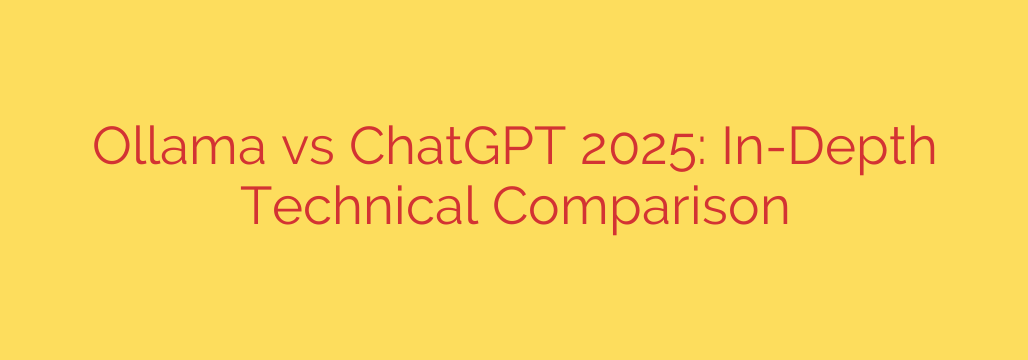
Exploring the technical landscape of AI models reveals crucial distinctions between Ollama and platforms like ChatGPT, particularly when looking towards the capabilities expected by 2025. A deep dive into their architecture and operational mechanics highlights their core strengths and ideal use cases.
On one side, we have Ollama, which stands out for its local-first approach. This platform is designed to make it significantly easier to run large language models, including various permutations of Llama, Mistral, and others, directly on your personal computer or server. Technically, this means users benefit from enhanced privacy and reduced latency because processing occurs entirely offline or within a private network. Ollama simplifies model deployment and management locally, allowing developers and enthusiasts to experiment and build applications without relying on external cloud infrastructure. Its strength lies in its flexibility and accessibility for running open-source models, making advanced AI processing feasible on consumer-grade hardware, albeit with performance dependent on the specific model size and available resources. By 2025, we anticipate Ollama supporting an even wider array of cutting-edge open models with further optimizations for local execution.
Conversely, ChatGPT, representing the state-of-the-art in cloud-based AI, operates on vast proprietary models developed and hosted by its parent company. The technical prowess here comes from immense scale and computational power available in the cloud. This allows ChatGPT to handle exceptionally complex queries, generate highly coherent and contextually relevant text, and access a broad spectrum of knowledge gleaned from its massive training data. Users interact via an API or web interface, offloading all the heavy computational work to powerful remote servers. The trade-offs involve reliance on an internet connection, potential concerns over data privacy (as data is processed externally), and cost associated with usage, especially for high-volume or advanced applications. By 2025, these large models are expected to push boundaries in multi-modal understanding, reasoning, and specialized task performance, leveraging further advancements in model architecture and training techniques.
Technically comparing them boils down to a choice between distributed, local processing with Ollama, offering control, privacy, and cost predictability for running specific models, versus centralized, cloud-powered intelligence from platforms like ChatGPT, providing access to the most powerful, versatile, and continuously updated models at scale. The optimal choice hinges entirely on technical requirements, resource availability, privacy considerations, and the specific nature of the AI tasks at hand. Understanding these underlying technical differences is crucial for selecting the right tool for your AI workflow in the evolving landscape of 2025.
Source: https://collabnix.com/ollama-vs-chatgpt-2025-complete-technical-comparison-guide/








